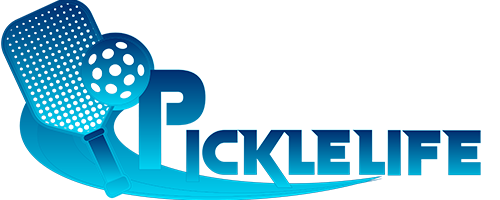Pickleball Court Maintenance: A Comprehensive Guide
Maintaining a pickleball court is not just a chore; it’s a labor of love. Think of it as nurturing a garden where the fruits of your labor yield hours of enjoyment and camaraderie on the court. Regular maintenance ensures that the playing surface remains safe and enjoyable, enhancing the experience for players of all skill levels. As the popularity of pickleball continues to soar, understanding proper court maintenance becomes crucial not only for maintaining the court’s physical integrity but also for encouraging community participation in this dynamic sport. Let’s dive into the essential aspects of pickleball court maintenance, exploring practices that enhance player safety, prolong the lifespan of the surface, and ultimately enrich gameplay.
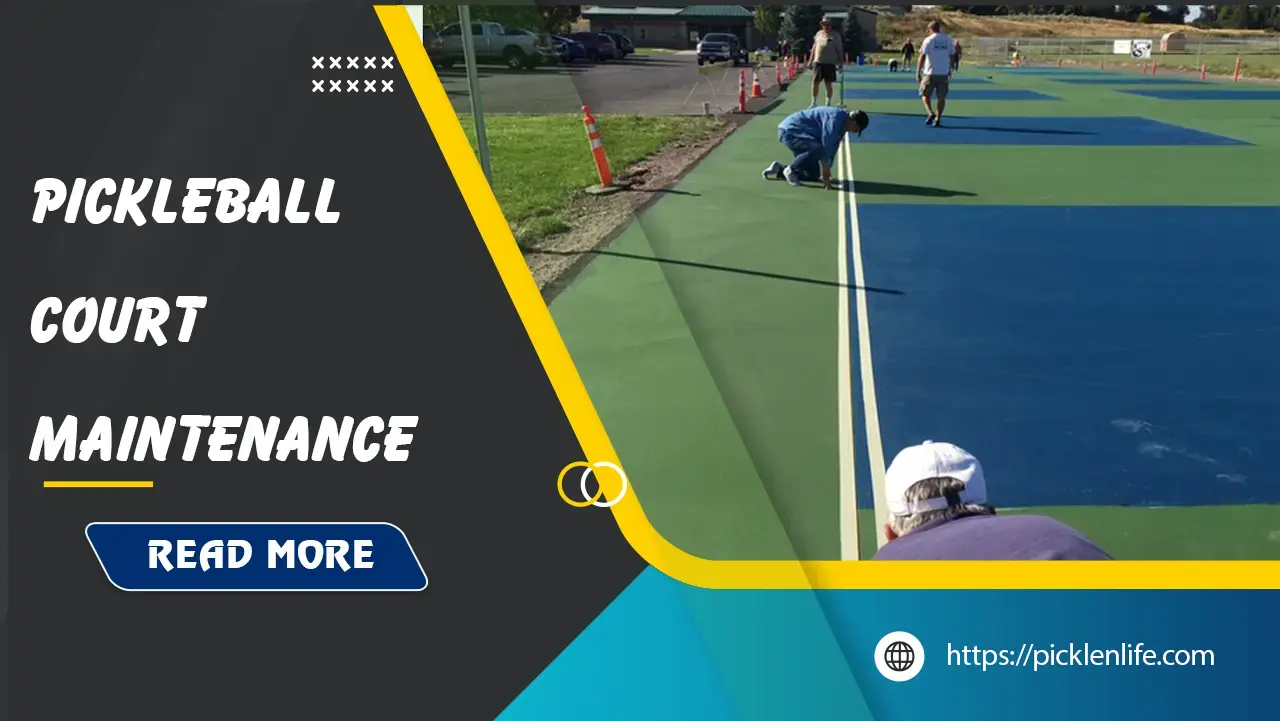
Why pickleball court maintenance matters
The importance of proper management of a pickleball court cannot be overstated. Think of maintenance as the backbone of a vibrant community, ensuring that every player be it a novice or a seasoned pro can enjoy the game in a safe, well-kept environment. Here are some compelling reasons to prioritize pickleball court care:
- Enhanced Playing Experience: A well-maintained court offers consistent playability, allowing players to focus on honing their skills rather than navigating around imperfections.
- Prevention of Injuries: Regular upkeep significantly reduces the risk of accidents caused by cracks, uneven surfaces, or debris. The smoother the surface, the less chance of slips and falls.
- Extended Court Lifespan: Proper maintenance, including routine cleaning and timely repairs, helps prolong the life of the court surface. This not only preserves your investment but can save costs in the long run by deferring expensive repairs or resurfacing.
- Improved Aesthetic Appeal: A neat, clean court adds to the beauty of the facility, attracting more players and fostering a sense of community pride.
Investing dedication and time into these practices will pay dividends as you and the community enjoy a smoother, safer, and more engaging playing experience.
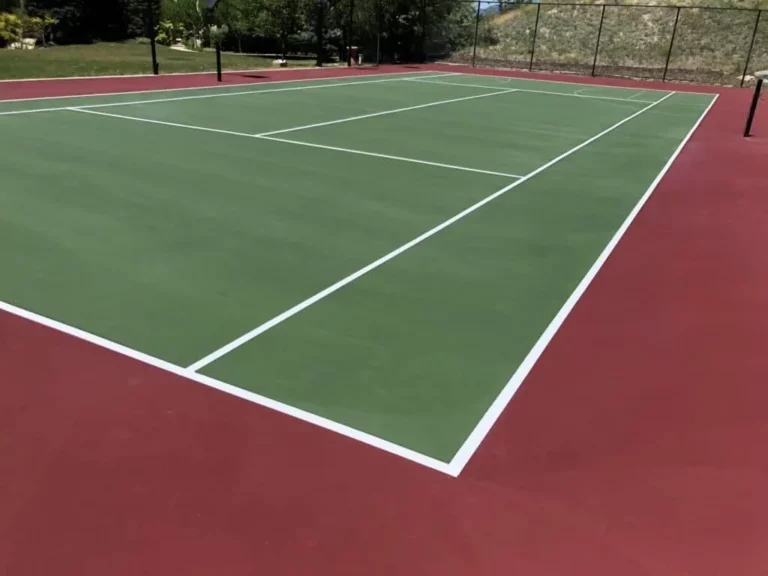
Assessing your court: recognizing signs of wear and tear
Understanding how to spot the telltale signs of wear and tear on your pickleball court can mean the difference between a small fix and a much larger, costlier repair down the line. Regularly inspecting your court is key to early detection, and here are some areas to focus on:
Surface issues
Assessing the surface is perhaps the most critical aspect of pickleball court care. Minor cracks and stains can escalate if left unaddressed, leading to more significant problems. Regular inspections should look for:
- Cracks: Small, hairline cracks may seem insignificant, but they can grow over time, leading to larger fissures.
- Stains: These can be signs of oil, mold, or other residues that can affect surface traction.
- Puddles: Standing water is a clear indicator of poor drainage. Known colloquially as “birdbaths,” these areas can compromise safety and require immediate attention.
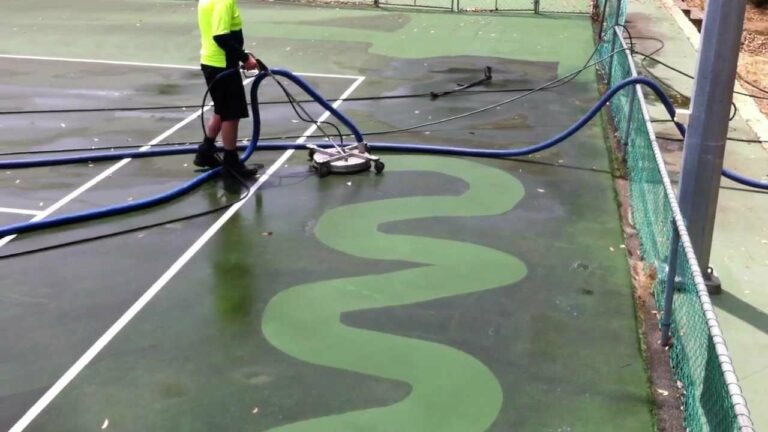
Identifying these issues early allows for swift action, helping to maintain a level and inviting playing surface.
Net and post problems
Paying attention to the net and posts is equally crucial. Inspect these components regularly to ensure they are functioning correctly:
- Net sagging: A sagging net alters the characteristics of play and can be a nuisance for both recreational and competitive matches.
- Loose hardware: Regular checks for any loose screws or nuts can help prevent instability and potential accidents during play.
- Rust and corrosion: Inspecting for signs of deterioration caused by weather exposure is critical. These issues can undermine the structural integrity of the posts.
By being proactive in monitoring the status of these components, you’ll ensure a higher quality playing experience.
Line visibility
Court lines define the playing area, and their visibility is essential for fair play. Here’s where attention to detail is crucial:
- Faded lines: Ensure that all lines are bright and easily visible. Fading can seriously impact gameplay, especially in competitive settings.
- Obstructed lines: Weeds or debris can obscure lines, making it challenging for players to adhere to the court boundaries.
A fresh coat of paint can make all the difference in maintaining clarity and ensuring fair gameplay.
Pickleball court maintenance essentials: a surface-specific approach
Just as every good chef knows that different dishes require different techniques, maintaining a pickleball court necessitates a comprehensive understanding of various surface types. Each surface whether concrete, asphalt, acrylic, wood, or modular tiles has unique maintenance needs. Here’s a tailored approach to care for each type:
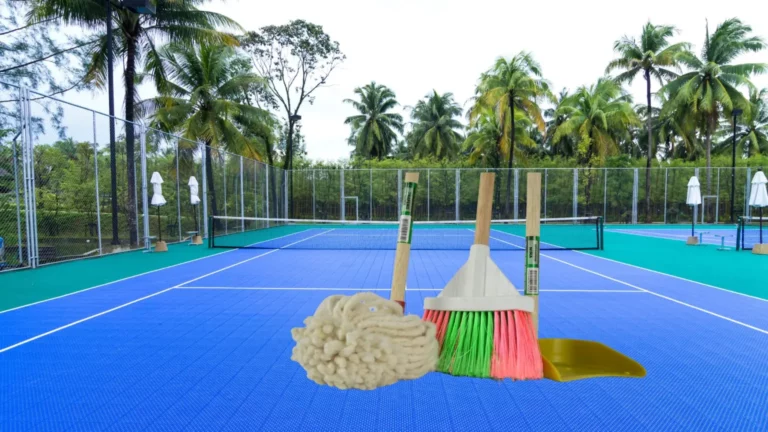
Concrete courts
Concrete courts are durable but require specific care to maintain their integrity:
- Cleaning procedures: Regular sweeping and occasional washing with mild detergent will help maintain cleanliness.
- Repair techniques: Minor cracks can be addressed using a concrete filler designed for outdoor use to prevent moisture infiltration.
- Resurfacing: Over time, professional resurfacing may be necessary to restore optimal playability and aesthetics.
Asphalt courts
Like concrete, asphalt courts come with their sets of maintenance requirements:
- Cleaning recommendations: Use a broom or leaf blower to keep the surface clear of debris, and opt for a hoe or shovel to maintain edges.
- Repair procedures: Cracks should be filled using cold-patch asphalt mixtures to keep water out and restore a smooth playing surface.
- Resurfacing options: Resurfacing is generally needed every 5–10 years, depending on wear and environmental impacts.
Acrylic courts
Known for their superior aesthetics and playability, acrylic courts need specific maintenance attention:
- Cleaning practices: Utilize soap solutions that are compatible with acrylic surfaces while avoiding harsh chemicals.
- Preventing fading: Consistent protection involves utilizing a UV-reflective coating that can help in maintaining the vibrant color.
Wooden courts
While wooden courts offer a unique playing experience, they require more intensive care:
- Cleaning methods: Regularly dust and mop to maintain surface cleanliness without damaging the wood.
- Maintenance tips: Schedule periodic sanding and sealing to protect the surface from wear and environmental factors.
Modular tile systems
Modular systems require their own unique strategies:
- Maintenance methods: Regular cleaning can be done with a broom and mild detergent.
- Repair needs: Individual tiles can be removed and replaced if damaged, making it easier to maintain a consistent playing surface.
By understanding the nuances of each surface type, players and facility managers can ensure a safe and enjoyable experience.
Net and post care: ensuring optimal performance and safety
Both the net and post system are vital components of any pickleball court, and proper care is essential for maintaining their overall integrity. Here are some essential steps for ensuring optimal performance and safety:
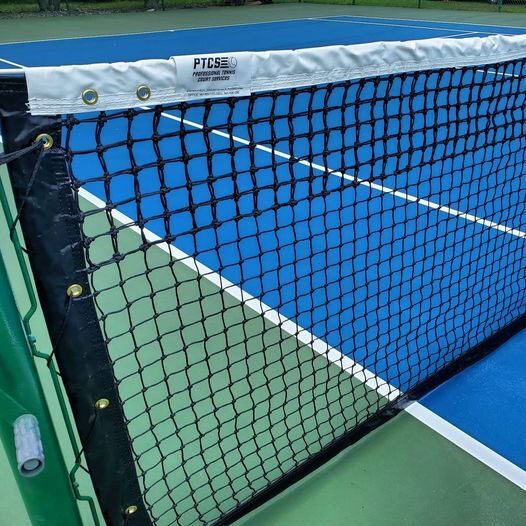
Net cleaning and inspection
Keeping the net clean improves aesthetics and performance:
- Cleaning the headband: Use a soft cloth and a mild detergent to clean the net’s fabric and remove dirt, ensuring playability is unaffected.
- Net material inspection: Check for fraying or stretching in the net, as these can impair gameplay.
Regular monitoring can help extend the life of these valuable components.
Post maintenance and repair
Ensuring the posts are stable is vital for safe and successful games.
- Cleaning posts: Regularly wipe them down to prevent rust and corrosion, maintaining a welcoming environment for players.
- Rust treatment: If rust is detected, treat it immediately with a rust remover or paint designed for metal surfaces.
When to replace
Knowing when to replace the net or posts can save time and effort:
- Signs of wear: If the net fails to meet competitive standards due to damage, replacement may be necessary.
- Frequency of use: High-traffic courts may require more frequent replacement of nets or posts.
By remaining vigilant about the condition of the net and posts, athletes can ensure a high-performance experience.
Line marking: maintaining clear boundaries for fair play
Proper line marking is critical for upholding proper gameplay. Clear, visible lines not only facilitate fair play but also enhance the overall experience on the court.
Repainting faded lines
To ensure that all court lines remain clear and defined:
- Repainting instructions: Use the appropriate line paint after thoroughly cleaning the marked areas to avoid grime or debris affecting adherence.
- Recommended tools: Consider a paint roller and precision tape for crisp edges and clean lines.
Ensuring accuracy
Adhering to official regulations is paramount for maintaining fairness:
- Dimensions and standards: Familiarize yourself with official pickleball court dimensions and specifications. Resources like the USA Pickleball Association guidelines provide essential information.
- Regular checks: Perform regular inspections to ensure the lines remain accurate and conform to emerging standards.
Well-maintained lines create clarity, helping players focus on the game instead of navigating foggy boundaries.
Tending to the surroundings: enhancing the playing environment
The area surrounding a pickleball court significantly contributes to the overall experience. Taking the time to landscape and manage these surroundings enhances safety and wellness:
Landscaping and vegetation management
Healthy landscapes frame the court beautifully while ensuring safety:
- Weed control: Regularly check for weeds encroaching on play areas and pull them out to maintain cleanliness.
- Tree placement: Avoid planting trees too close; doing so can hinder visibility and invite falling debris.
A manicured landscape sets the tone for an inviting atmosphere.
Sprinkler system management
Optimizing your irrigation system prevents overwatering, preserving court integrity:
- Adjustments: Ensure sprinkler heads are adjusted correctly to prevent water from pooling on court surfaces.
- Maintenance: Regularly inspect the irrigation system for any clogs or leaks that may lead to unwanted water accumulation.
Healthy, well-managed surroundings invite more players to enjoy the court while ensuring their safety.
Amenity maintenance
Take the time to maintain the amenities around the court:
- Cleaning benches: Regularly wipe down benches to prevent mildew and stains.
- Water fountains: Clear any debris and check for functionality to provide players with hydration.
A clean playing environment reflects community pride and enhances the playing experience.
Seasonal pickleball court care: adapting to climate changes
Weather significantly impacts court maintenance, necessitating different approaches throughout the seasons. Here’s how to adapt your care routine for seasonal changes:
Winterizing your court
Taking necessary precautions in colder months is vital for preserving the playing surface:
- Nets: Remove netting during harsh conditions and store it properly to avoid damage.
- Snow removal: Use shovels or brooms rather than sharp objects that could gouge the surface.
Implementing these seasonal strategies will help avoid damages stemming from extreme weather conditions.
Summer court protection
As temperatures rise, additional measures are necessary to shield the surface from the sun’s harsh rays:
- UV protection: Apply protective sealants that can resist UV damage and prolong the life of the court paint.
- Surface maintenance: Increase cleaning frequency during hot months to clear excess dust and debris that accumulates quickly.
These steps can proactively address heat-induced damage.
Humid climate considerations
In areas with high humidity, special strategies are needed to combat mold growth:
- Mold prevention: Use mildew-resistant cleaning solutions.
- Court cleaning: Regularly clean surfaces to deter mildew accumulation caused by moisture.
By being strategic about seasonal maintenance, players can ensure their court remains enjoyable and accessible year-round.
The player’s role: promoting responsible court use
Players play an essential role in preserving the quality of the court, and their actions can greatly contribute to its longevity. Here are ways players can promote responsible court use:
Footwear matters
Choosing the right shoes can make a significant difference in court preservation:
- Court-appropriate footwear: Wearing shoes designed for pickleball or other indoor sports minimizes surface wear and maximizes traction.
- Recommendations: Consider training models that provide ample support while adhering to the surface without causing scuffs.
Educating players on the right footwear can lead to prolonged surface life.
Preventing damage
Promoting good habits extends beyond footwear:
- Equipment care: Encourage players to store their paddles and bags properly, avoiding any excessive wear caused by dragging equipment on the court.
- Respect for surfaces: Urge players to avoid dropping heavy items that could scar or damage the court.
By cultivating respect for the facility, players advocate for its care.
Reporting issues promptly
Prompt reporting of damages is vital for maintaining the court:
- Identifying damage: Encourage regular players to communicate any issues to court managers for immediate action.
- Timely repairs: The sooner issues are reported, the less likely they are to develop into significant problems.
Building an open channel of communication keeps the court healthy and encourages responsible use.
When to call the pros: recognizing the need for expert assistance
Some maintenance tasks may extend beyond the capacity of casual players or facility managers. Knowing when to call in the pros is crucial:
Signs you need a professional
Certain problems, like extensive resurfacing, often require specialized equipment and skills. Recognizing these signs can save players time and effort:
- Major structural issues: Any significant damage that extends beyond minor cracks may necessitate a professional intervention.
- Complex repairs: In instances of severe drainage problems or unexpected deterioration, expertise may be required.
Consulting professionals can provide peace of mind and ensure a proactive approach to maintenance.
Finding qualified professionals
Researching and vetting potential contractors is essential for choosing the right fit:
- Recommendations: Seek referrals from local clubs or associations to find skilled professionals specializing in court maintenance.
- Check credentials: Ensure that the contractors possess the necessary certifications and experience to guarantee high-quality work.
Maintaining a well-kept court is a collective effort, necessitating collaboration between players, facility managers, and professionals alike.
In conclusion, maintaining a pickleball court is an ongoing journey it requires dedication, consistent effort, and community involvement. By understanding the intricacies behind proper court care, players can ensure an enjoyable and safe environment for all enthusiasts. Whether it’s being proactive in inspections, adhering to seasonal maintenance, or promoting responsible use, every action contributes to the longevity and quality of your beloved court. Let’s cherish and take care of our facilities so that they continue to foster relationships, exercise, and joy for generations to come.
